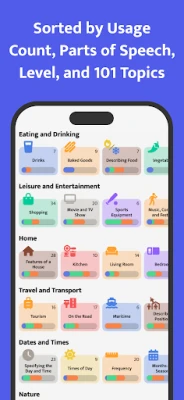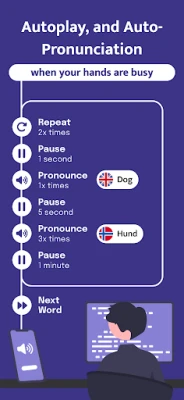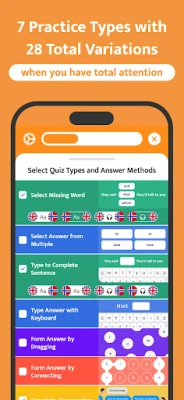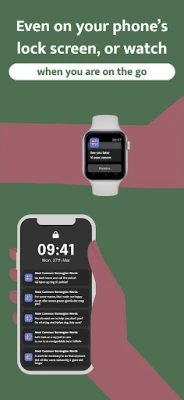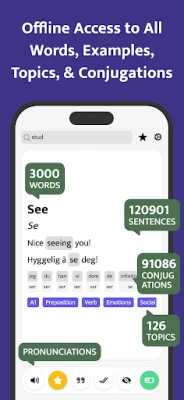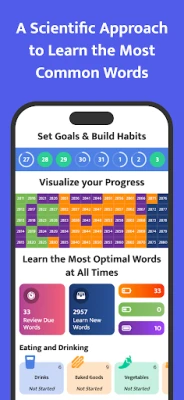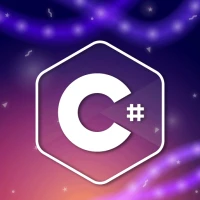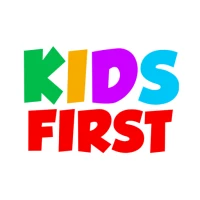
Latest Version
1.1.26
October 28, 2025
Dominik Gyecsek
Education
Android
0
Free
com.chillnstudy.enno
Report a Problem
More About Most Common Norwegian Words
Master Vocabulary with Contextual Example Sentences and Pronunciations
Enhancing your vocabulary is essential for effective communication, and one of the best ways to achieve this is through contextual example sentences. This article explores how to utilize example sentences, filter them by levels, topics, and parts of speech, and leverage innovative study methods to master new words effortlessly.
Understanding Contextual Example Sentences
Contextual example sentences provide clarity and depth to vocabulary learning. By seeing words used in sentences, learners can grasp their meanings and applications more effectively. This method not only aids in memorization but also enhances comprehension, making it easier to recall words when needed.
Filter by Levels: Tailoring Your Learning Experience
To maximize your learning potential, it’s crucial to filter example sentences by proficiency levels. Whether you are a beginner (A1), elementary (A2), intermediate (B1), or upper-intermediate (B2), you can find sentences that match your current understanding. This tailored approach ensures that you are not overwhelmed and can progress at your own pace.
Beginner Level (A1)
At the A1 level, focus on simple sentences that introduce basic vocabulary. For instance, “The cat is on the mat.” Such sentences help build foundational language skills.
Elementary Level (A2)
As you advance to A2, you can explore slightly more complex structures. An example might be, “She likes to read books in the evening.” This level encourages the use of common verbs and adjectives.
Intermediate Level (B1)
At the B1 level, sentences become more varied and nuanced. For example, “He enjoys playing soccer with his friends on weekends.” This level introduces more vocabulary and grammatical structures.
Upper-Intermediate Level (B2)
Finally, at the B2 level, you can tackle sophisticated sentences like, “Although it was raining, they decided to go hiking.” This level challenges learners to understand complex ideas and expressions.
Exploring Topics and Parts of Speech
In addition to proficiency levels, filtering example sentences by topics and parts of speech can significantly enhance your learning experience. Whether you are interested in travel, technology, or everyday conversations, you can find relevant sentences that resonate with your interests.
Topics
Choosing specific topics allows you to engage with vocabulary that is relevant to your life or studies. For instance, if you are preparing for a trip, you might focus on travel-related vocabulary, such as “The hotel is near the beach.”
Parts of Speech
Understanding the different parts of speech—nouns, verbs, adjectives, and adverbs—can also aid in vocabulary acquisition. For example, learning sentences like “The quick brown fox jumps over the lazy dog” helps reinforce the use of adjectives and verbs in context.
Innovative Study Methods for Vocabulary Mastery
Modern technology offers innovative ways to study vocabulary without the need to constantly open an app. Here are some effective methods to consider:
Flexible Notifications
Set up flexibly scheduled notifications to remind you to practice vocabulary throughout the day. This approach allows you to study on your own terms, even when you’re busy or on the go, such as during a commute or while exercising.
Flashcard Autoplay and Auto-Pronounce
Utilize flashcard features that autoplay and auto-pronounce words. This is particularly useful when your hands are occupied. Listening to the pronunciation while viewing the word in context reinforces learning and aids in retention.
Engaging Quiz Types
Practice with your favorite quiz types to solidify your understanding of new vocabulary. Quizzes can range from multiple-choice questions to fill-in-the-blank exercises, making learning interactive and enjoyable.
Conclusion: Elevate Your Vocabulary Learning
By incorporating contextual example sentences, filtering by levels and topics, and utilizing innovative study methods, you can significantly enhance your vocabulary learning experience. Embrace these strategies to master new words and improve your communication skills effectively. Start your journey today and watch your vocabulary flourish!
Rate the App
User Reviews
Popular Apps

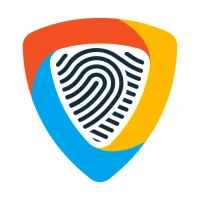








Editor's Choice











